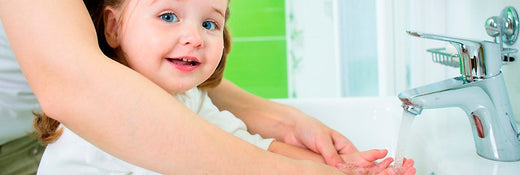
Drinking water treatment: safe water for daily needs
|
|
Time to read 3 min
|
|
Time to read 3 min
Drinking water treatment is an essential process to ensure that the water that we consume daily is of high quality and free of harmful contamination. For self -catering and people who live self -sufficient, the preparation of drinking water is particularly important to protect yourself against diseases and intolerances. This goal can be easily achieved with the right methods and technologies.
The Drinking water treatment comprises various methods for removing contaminants and for disinfecting the water. Depending on the source of the water and the existing contamination, different filter and disinfection methods may be necessary. For example, the presence of E. coli bacteria requires disinfection through a UV-C system, while cloudy water can be cleaned by a floating fabric filter. Chemical contaminants such as hydrocarbons are effectively removed by activated carbon filters.
UV-C systems: These use ultraviolet light to kill bacteria and viruses in the water. They are particularly effective against microorganisms and are often used in combination with other filters to ensure comprehensive disinfection.
Floating fabric filter: These filters are designed to remove coarse particles from the water that could cloud it. They are an important first stage in water treatment because they prevent other filters from being blocked by larger particles.
Activated carbon filter: These filters are particularly useful for removing organic compounds, chlorine and other chemicals. Activated carbon has the ability to bind many pollutants through adsorption, which makes the water taste and odorless.
Depreciation and descaling filters: These filters are specialized solutions to remove iron and lime from the water, which is particularly important in areas with hard water.
Regular water analyzes are essential to assess the quality of the water and select the correct filters. These analyzes can check different parameters such as clouding, water hardness, chemical contaminants and microbiological stress.
Visual inspection: Dull water can be easily identified by a simple visual inspection. Such a test provides the first indication of whether a floating fabric filter is required.
Tests for water hardness: These tests require special sets and are necessary to determine the lime content of the water. This is important for the selection of suitable descaling measures.
Chemical and microbiological tests: These are more complex and often require analysis by a specialized laboratory. They are necessary to identify invisible contaminants such as chemicals or bacteria that can represent health risks.
After analyzing the water, it is crucial to install the correct filter systems in the correct order. Floating fabric filters should always be at the beginning of the system because they increase the efficiency and lifespan of the following filters. Activated carbon filters usually follow suspended fabric filters to remove chemical contaminants. UV-C systems should be installed last to ensure that all potentially harmful microorganisms are killed before the water is used.
UV-C systems differ from chemical disinfectants such as chlorine, since they only disinfect the water through the system during the run. Chlor, on the other hand, offers a custody effect that keeps the water germ -free over a long period of time, but can also bring health and taste disadvantages. A major advantage of UV-C disinfection is that it does not leave any chemical residues, which means that the water can be safely consumed immediately after the treatment.
With the right knowledge and the right equipment, the independent drinking water treatment is neither complicated nor dangerous. Self-catering can ensure that your water is clean and healthy by using floating, activated carbon and UV-C filters. This is particularly important in times when the quality of the tap water can be impaired by external influences such as heavy rains or industrial dirt.
The investment in high -quality water treatment systems pays off in the long term, since they not only protect health, but also save costs for the purchase of bottle water. They also contribute to reducing plastic waste, which has a positive environmental effect.
A well -maintained water treatment plant not only contributes to the quality of the drinking water, but also improves hygiene in the household. Pure water is not only important for consumption, but also for the preparation of food and personal hygiene.
Drinking water treatment is a critical aspect of daily health care. With the right measures, homeowners and self -catering can ensure that you always have access to clean, healthy water. Both the selection of the right filters as well as regular maintenance and review of the systems play a central role. In a world in which the quality of natural water is threatened by numerous factors, thorough and well -planned water treatment offers the necessary safety and protection for health.